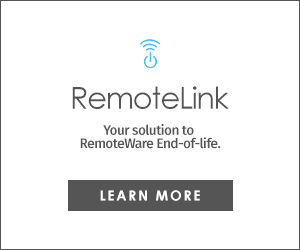 The internet of things is a great way to encompass future technology advancements and their interconnected nature. For every business, especially brick-and-mortar, IoT will largely impact daily operations, including how employees interact with, and use data to inform decisions. We are on the cusp of a new age of technology with stores of the future akin to the space stations created in Hollywood that we marveled at on the silver screen.
The internet of things is a great way to encompass future technology advancements and their interconnected nature. For every business, especially brick-and-mortar, IoT will largely impact daily operations, including how employees interact with, and use data to inform decisions. We are on the cusp of a new age of technology with stores of the future akin to the space stations created in Hollywood that we marveled at on the silver screen.
According to Russ Thompson, Alexa's Senior Research Scientist,
Over the last decade there’s been a massive explosion in both the data generated and retained by companies, as well as you and me. Sometimes we call this “big data,” and like a pile of lumber we’d like to build something with it. Data scientists are the people who make sense out of all this data and figure out just what can be done with it. (Understanding Data Science and Why It’s So Important)
Once your company's data scientists make sense of this influx of data, you need to ensure that your employees have a solid foundation and understanding of how to interpret and implement each new finding.
The Power of Understanding
Charlotte based educator, Lisa Young Palladino, says:
It doesn't matter the age of the learner; if you don't understand what is being asked of you, you can't complete the task. Employees may be very skilled with their training and "know" how to perform tasks, but if they do not understand say, the needs of one client versus another, they may not best meet a particular client's needs. As the owner of Ballantyne Reading Academy, I tell this to my students all the time: You have to understand what is being asked of you before you can answer the question.
Every organization uses to data to track, analyze, and report the current state of the business, both internally and externally. As it stands today, many companies leave the data to a team of IT personnel who have extensive training in the field. With IoT completely transforming retail and restaurant operations, every employee will be affected and will need to adapt accordingly. Instead of giving commands, help your employees understand how these changes further support business growth and profitability. When new sensors or data collection methods are implemented, continuous change will be inevitable and you want every employee to be able to understand data, be on board, and be able to contribute to the company's success.
Mallory Akins, Director of Operations at Vendor Team Services, runs her Charlotte office of 40 employees and says,
The highest turnover rate reason is employees who do not understand. There seems to be a stigma with my younger employees that if they ask too many questions they seem weak so I get a constant flow of "Yeah, I see" or "Yes, OK, Of Course" when I look over their work. While they can update the mistake, they have no clue why it even happened to begin with.
Clarity in Structure and Purpose
 Increased reporting means more data to manage and more changes to be made. This will require a restructuring of who receives what data and who implements the necessary changes. Every employee should be aware of their role in this process and understand who to report to should they have questions, concerns, or input.
Increased reporting means more data to manage and more changes to be made. This will require a restructuring of who receives what data and who implements the necessary changes. Every employee should be aware of their role in this process and understand who to report to should they have questions, concerns, or input.
Elements of Data Training
Every employee should be able to understand data. However, what "should be" and what "is" are two very different things. Create a mix of different formats including video, audio, and classroom learning. We suggest teaching the basics of:
- Excel (or related spreadsheet formatting)
- Qualitative vs. Quantitative Data
- Reading Charts and Graphs
- Applying Data to Improve Business Functions (word problems; real-life scenarios)
In addition to your own program, include any available training modules that are provided by the software companies you work with. While quizzes or post lesson assignments aren't always liked, they do help cement that every trainee is able to take what they've learned and apply it.
Brittanie Young from Diverge HR says one of the areas she works with clients on is employee development and training.
I see this a lot in the workforce and there is a huge gap between having the knowledge about something and actually putting what you have learned into practice. I think that business and HR leaders need to work together to create a culture of learning in their organizations. Employee training needs to entail a combination of learning and on the job training. Perhaps after each module of training, employees can be given a short assignment or project that will allow them to showcase everything they have learned. I also think the sometimes employees suffer from information overload where there is no time to actually let the information sink in.
By empowering your employees to be able to understand and apply data to inform day-to-day operations and improve business functions, you are making them an even greater company stakeholder.


